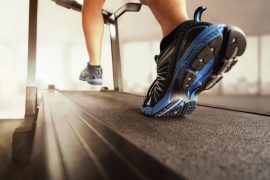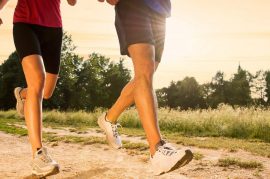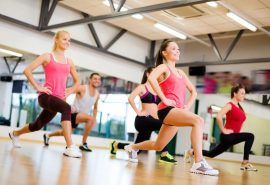By Mahta Mirhosseini, Therapy Resource
I recently had a chance to interview Lana Mathis about her experience with Clinisign. Lana is an OTA who has been with Ensign since 2012 as a DOR at Granite Mesa and now at Legend Oaks Kyle in Texas. When she is not “DORing,” she loves archery, and likes to travel, fish, take long motorcycle trips, and read. Her favorite ice cream flavor is Haagen-Dazs® Caramel Cone.
How long have you been using Clinisign?
LM: I have been using CliniSign since 2017
Did you have any challenges in getting started and how did you overcome them?
LM: The main challenge that I had was getting the Physicians to sign. Once I explained how it works and gave them a copy of the CliniSign for Physicians they were more open to it. I think the key words here are “time saving” and “it’s as easy as punching a button.” It is a lot easier to get Nurse Practitioners to sign up. I signed on a Nurse Practitioner here at Legend Oaks Kyle. She stated, “Oh that was really easy and very convenient.”
How does Clinisign impact your therapy program?
LM: CliniSign has a tremendous impact on the therapy program. It affects productivity/time. It saves so much time and chance for errors. It helps with compliance and especially with MSCA audits. The amount of time saved is enormous. I changed buildings recently and I had forgotten how cumbersome and outdated it was to have to chase signed papers.
How does Clinisign impact your therapists?
LM: The therapists love Clinisign because it saves them time from having to complete clarification orders. It also saves time from having to rewrite clarification orders because the through dates were different from the evaluation dates. They also don’t have to print their evals and recerts anymore.
Did your IDT have to do anything different to adapt to Clinisign?
LM: All of the IDT related information is on the portal and very user friendly. I recently had a Nurse Practitioner out on vacation for a week, and the covering Nurse Practitioner was not in Clinisign. It felt like going back in time to life before electronic health records. The amount of time chasing pieces of paper and making sure they were scanned into PCC was ridiculous.
Any advice for therapy programs who are thinking of getting started with Clinisign?
LM: To all programs that are thinking about getting started with Clinisign, I say…
Just Do It!
What are you waiting for?
It’s a life changer for the therapy department!
You will be amazed at how much time you save!
It’s much easier than you think!
Give yourself an early Holiday present and do it now!
You deserve it!
Remember, if you have any questions about getting started with Clinisign, please reach out to Mahta Mirhosseini (mmirhosseini@ensignservices.net) or your local therapy resource.



 By Angela Ambrose, contributing writer
By Angela Ambrose, contributing writer
 Healthy Eating and Exercise to Slow or Reverse Diabetes?
Healthy Eating and Exercise to Slow or Reverse Diabetes?

 Have you heard about it? There’s a spark, and it’s starting to catch fire! Last week’s workshops had over 30 participants in total — and this is just the beginning!
Have you heard about it? There’s a spark, and it’s starting to catch fire! Last week’s workshops had over 30 participants in total — and this is just the beginning!




 2. Try a group fitness class — Even if you’re exercising in a crowded gym, you can still feel lost and lonely if you’re climbing on the stair stepper in a dark corner or lifting weights by yourself. Most health clubs offer group fitness classes taught by nationally certified instructors. The group energy is contagious and can help you push through an especially challenging workout. From barbell and kickboxing to dance and yoga classes, you’ll find a wide range of options to build aerobic endurance, muscular strength and flexibility.
2. Try a group fitness class — Even if you’re exercising in a crowded gym, you can still feel lost and lonely if you’re climbing on the stair stepper in a dark corner or lifting weights by yourself. Most health clubs offer group fitness classes taught by nationally certified instructors. The group energy is contagious and can help you push through an especially challenging workout. From barbell and kickboxing to dance and yoga classes, you’ll find a wide range of options to build aerobic endurance, muscular strength and flexibility. catch, kickball or Frisbee simply because you enjoyed being with friends. Make exercise fun again by joining a recreational sports league such as softball, soccer or basketball or by taking up tennis or racquetball. Team sports are particularly beneficial because they create social connections and friendly competition. A study published in Mayo Clinic Proceedings shows that participating in partner and team sports is associated with longer lifespans than exercising alone because they combine the benefits of physical activity with stimulating social interaction.
catch, kickball or Frisbee simply because you enjoyed being with friends. Make exercise fun again by joining a recreational sports league such as softball, soccer or basketball or by taking up tennis or racquetball. Team sports are particularly beneficial because they create social connections and friendly competition. A study published in Mayo Clinic Proceedings shows that participating in partner and team sports is associated with longer lifespans than exercising alone because they combine the benefits of physical activity with stimulating social interaction.
 more likely to log extra steps, burn more calories and go well beyond the U.S. Physical Activity recommendations, as well as your own personal fitness goals.
more likely to log extra steps, burn more calories and go well beyond the U.S. Physical Activity recommendations, as well as your own personal fitness goals.
 In Utah, we are fortunate enough to have a Recreational Therapy Resource, Kami Archibald. Kami is a great partner with our therapy teams to find ways to further enhance the lives of our residents. Through this partnership, our facility Rec Therapists are becoming an integral part of the therapy teams. This all started when they asked to be educated about our “therapy world,” productivity and how Rec Therapy can support us.
In Utah, we are fortunate enough to have a Recreational Therapy Resource, Kami Archibald. Kami is a great partner with our therapy teams to find ways to further enhance the lives of our residents. Through this partnership, our facility Rec Therapists are becoming an integral part of the therapy teams. This all started when they asked to be educated about our “therapy world,” productivity and how Rec Therapy can support us.
 An extensive interactive workshop with the Legend Oaks-New Braunfels team was conducted where the team had to design a room and bathroom with the appropriate colors, hues and tones in accordance with what we had learned about vision deficits and other physical and cognitive deficits present in dementia residents. Extensive education was provided about utilizing familiar designs with dementia care and the evidence surrounding this approach. “More familiar designs mean people with dementia are less likely to need help, that they make fewer mistakes and that they are more satisfied with the process than if the designs are unfamiliar.”
An extensive interactive workshop with the Legend Oaks-New Braunfels team was conducted where the team had to design a room and bathroom with the appropriate colors, hues and tones in accordance with what we had learned about vision deficits and other physical and cognitive deficits present in dementia residents. Extensive education was provided about utilizing familiar designs with dementia care and the evidence surrounding this approach. “More familiar designs mean people with dementia are less likely to need help, that they make fewer mistakes and that they are more satisfied with the process than if the designs are unfamiliar.” Meet Angela Ambrose. Angela is our latest partner contributing to our WELL Project and is a freelance writer with more than 30 years of writing experience. She is also an ACE-certified group fitness instructor and yoga teacher. When she’s not writing or teaching classes, Angela enjoys hiking, running and cooking up healthy Mediterranean-style meals for her family. Born and raised in Chicago, Angela moved to Phoenix 20 years ago and has settled comfortably into her home in the sunny Southwest. For the latest health and fitness news, visit AngelaAmbrose.com or follow Angela on Facebook (@AmbroseHealthyLiving).
Meet Angela Ambrose. Angela is our latest partner contributing to our WELL Project and is a freelance writer with more than 30 years of writing experience. She is also an ACE-certified group fitness instructor and yoga teacher. When she’s not writing or teaching classes, Angela enjoys hiking, running and cooking up healthy Mediterranean-style meals for her family. Born and raised in Chicago, Angela moved to Phoenix 20 years ago and has settled comfortably into her home in the sunny Southwest. For the latest health and fitness news, visit AngelaAmbrose.com or follow Angela on Facebook (@AmbroseHealthyLiving).
 Improve sleep. Daily exposure to sunlight naturally regulates circadian rhythms — your body’s internal clock — for a better night’s sleep. Regular exercise can further improve sleep quality by helping you get to sleep sooner and increasing deep sleep.
Improve sleep. Daily exposure to sunlight naturally regulates circadian rhythms — your body’s internal clock — for a better night’s sleep. Regular exercise can further improve sleep quality by helping you get to sleep sooner and increasing deep sleep. sunlight, it produces vitamin D3. This vitamin stimulates the absorption of calcium, which is essential in maintaining strong bones. Vitamin D also helps fight off infections. Deficiencies in vitamin D can increase the risk of developing heart disease, diabetes, autoimmune diseases and some cancers.
sunlight, it produces vitamin D3. This vitamin stimulates the absorption of calcium, which is essential in maintaining strong bones. Vitamin D also helps fight off infections. Deficiencies in vitamin D can increase the risk of developing heart disease, diabetes, autoimmune diseases and some cancers. Burn more calories. The constantly changing outdoor environment creates more challenges and stress on the body. Wind resistance can make you burn more calories, especially when you’re running or cycling into a headwind. Walking or jogging on an uneven, changing terrain also requires more muscle engagement than a flat, uniform surface. Your body must also work harder to regulate your internal temperature when exercising outdoors in hot or cold temperatures.
Burn more calories. The constantly changing outdoor environment creates more challenges and stress on the body. Wind resistance can make you burn more calories, especially when you’re running or cycling into a headwind. Walking or jogging on an uneven, changing terrain also requires more muscle engagement than a flat, uniform surface. Your body must also work harder to regulate your internal temperature when exercising outdoors in hot or cold temperatures.